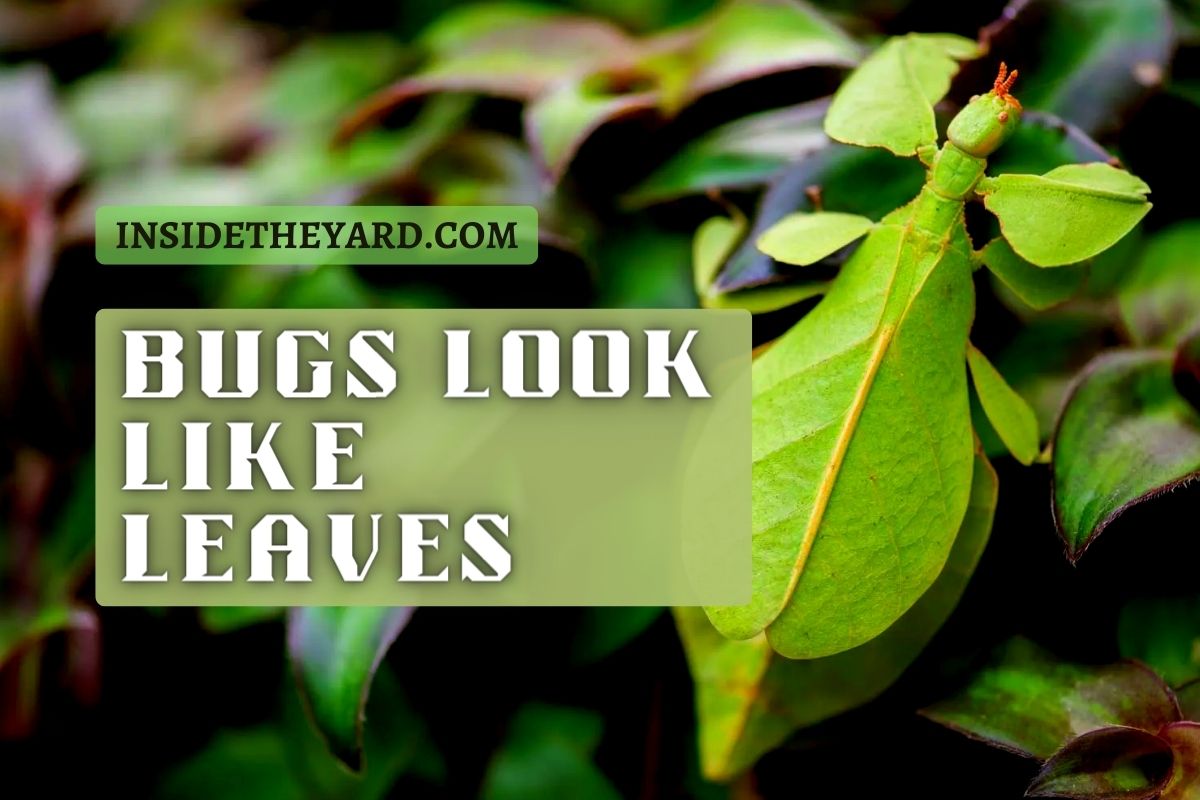Have you ever been startled when exploring a welcoming wilderness and observed a moving leaf? Well, since they are merely bugs that resemble identically to leaves, there is no need to be alarmed.
We know that chameleons and geckos may disguise themselves when the environment is unfavorable. However, the leaf insects (walking leaves) are some wonderful insects that are entirely natural and don’t need to make any extra effort to blend in.
They naturally have a leaf-like shape and color throughout their body. These insects come in many different varieties and have some fascinating information about them.
Keep reading till the end as this article has brought you all informative and interesting facts about the leaf insects. Let’s know about the bugs look like leaves!
What Are Leaf Insects And How Do Bugs Look Like Leaves?
Leaf bugs, often known as walking leaves, are generally green insects with a remarkable leaf-like appearance in all aspects, such as color, structure, shades, and even weight.
It is natural to wonder why do leaf bugs look like leaves? This is a natural defense mechanism to keep the bugs safe from predators. These insects feed on plants and prefer thickly vegetated places for quick and easy camouflaging.
The leaf bugs or walking leaves are from the Family: Phylliidae and Order: Phasmida or Phasmatodea under the Phylum Arthropoda. It is known that Arthropods contain the most counted living species of animals in the world.
With that succession, an astonishing fifty different species of Leaf insects have been discovered until this point on this Earth. Although, most leaf insects share a common lifestyle and internal and external anatomy.
But, surprisingly, most species are somewhat different in terms of nature, feeding, and living habitats. To simplify, we can divide the bugs that look like leaves and flowers into two types depending on the color and pattern.
Green bugs look like leaves, and insects look like dried/dead-brown leaves are the two major types.
Bug That Looks Like A Green Leaf
As the name suggests, the leaf insects are colored like fresh green leaves. They reside mostly in the natural greenery of vegetative areas such as swamp forests, rainforests, mangrove forests, farmlands, and gardens.
It is tough to find them as they completely camouflage with the green leaves of a tree during day time as they are most active at night. Here are some brief descriptions of a few insects’ look-alike green leaves.
1. Malaysian Giant Leaf Insect
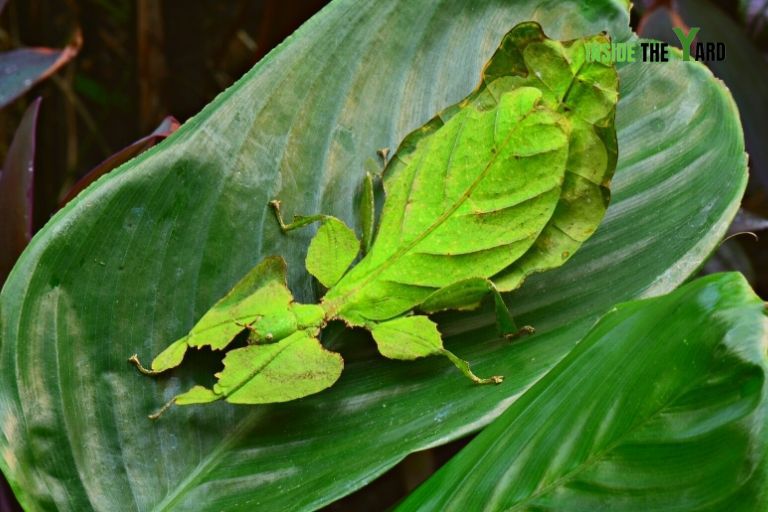
The bug that looks like leaves name is “Pulchriphyllium giganteum,” also known as the Giant Malaysian Leaf Insect. Since 2021, they have been classified in the genus Pulchriphyllium. These are the largest species, Pulchriphyllium giganteum, which measures 105 mm in length.
Habitat And Gender
You can find them in the Malaysian tropics most frequently. The females frequently lack hind wings and have huge elytra that lie edge to edge on their abdomens, rendering them flightless most of the time.
Male leaf insects have modest elytra and, sometimes, functioning, translucent, non-leaf-like hind wings. Young nymphs just hatched usually have no wings and are dark or reddish. After consuming leaves, they begin to turn green.
Food Habit
The adult and larval stages eat plants, known as phytophagy. Oak and bramble tree leaves are this species’ primary plant food sources.
Interesting Facts
It is claimed that leaf mimicry is a crucial part of the defense against predators. These insects have intricate veins in their body, just like an ordinary leaf. Besides, the edges have brown spots resembling a damaged leaf.
The nymphs sway to mimic the movement of a leaf by the breeze to staw from the predators. Some species’ antennae exhibit rows of tubercles that, when rubbed together, make noises that may also serve to drive away predators.
Importance
These green bugs that look like leaves are important in maintaining the ecological balance of the environment. Mostly they are the food for some animals and birds but also help pollinate.
Although they mostly reside away from the vegetative farmlands, there is no harm done to humans by these insects.
2. Katydid (Tettigoniidae)
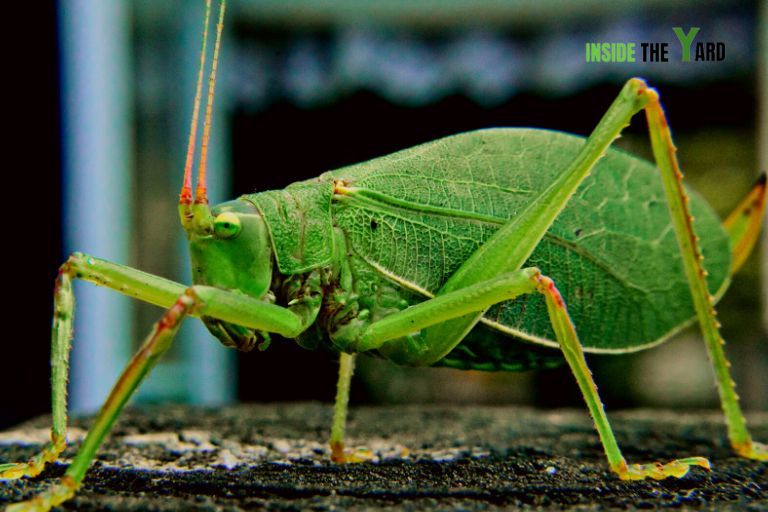
Any of the approximately 6,000 primarily nocturnal insects related to crickets and known for their mating calls are known as katydids. Small bugs that look like leaves are also known as long-horned grasshoppers or bush crickets. These leaf-like insects belong to the family Tettigoniidae. Its scientific name is Microcentrum rhombifolium.
Gender Identification
Along with their long, threadlike antennae and big hind legs, katydid leaf bugs are also distinguished by the females’ thick, upwardly curving ovipositor. It also serves as their egg-laying mechanism.
Food and Habitat
Katydid occasionally consumes green leaves and other parts of the plant (especially flowers). In addition, they may consume aphids and other sluggish-moving insects, as well as insects that have died. Some species in the tropics are quite carnivorous.
All types of green plants and leaves are their major source of food and also living space. Bugs that look like leaves in Michigan have a primary habitat, such as in tropical, terrestrial, swamp, and marsh regions. However, they may survive in a variety of climates.
Interesting facts
All species have distinctive features on their front wings that can be rubbed together to generate sound. They have flat spots on their legs that serve as ears and pick up these sounds.
Importance and Harmful Activity
Some katydids eat on dead animals and are predatory. They serve as the natural cleaning process in the wilderness. Moreover, some birds and small animals also feed on Katydids.
Katydids do not harm humans on a large scale, but they eat the crops if farmlands are nearer to their habitat. You can use basic pest control, like other insects, to control the infestation of katydid to the crops.
Bug That Looks Like A Leaf Brown
Besides the bugs that look like green leaves, our mother nature also presents some bugs that look like brown leaves or dead leaves. Their body is amazingly colored and structured like dried leaves, thus becoming easily camouflaged between the fallen leaves to avoid predators.
1. Dried-leaf Grasshopper
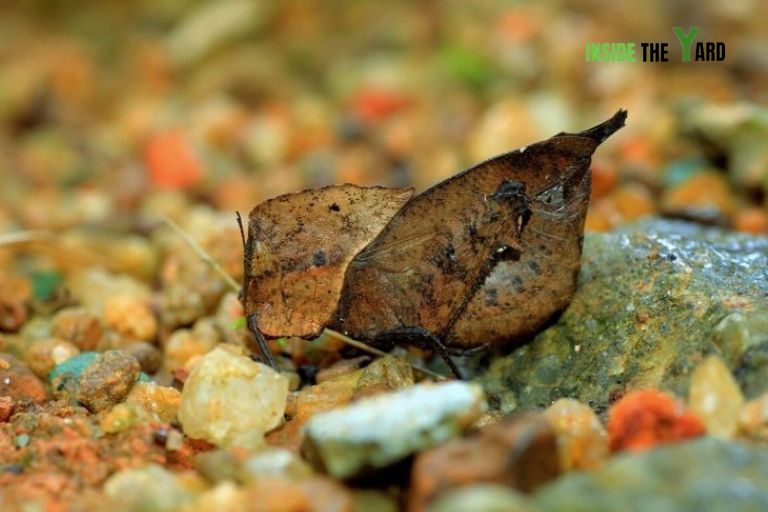
Generally named as dead or dry leaf grasshopper has a scientific name which is Chorotypus saussure. It is called so because the body of this insect resembles a dry brown leaf fallen from a plant.
Excellent mimics of both living and dead leaves are called “Dead leaf grasshoppers”. They have green, brown, or a combination of the two colors for their body and wings. The forewings have veins that mimic leaves and are patterned like leaves.
Additionally, they have small notches carved out of them that imitate nibbling marks on leaves caused by another herbivorous insect. The female’s ovipositor is highly bent and has a thick, saw-like tip.
However, this insect is much like a regular grasshopper and locusts regarding habitat, food, and lifecycle.
Habitat
These insects are mostly found in the bush of fallen dried-out leaves. Dry climates are highly favorable for them that is why Eastern and Southern Asian Countries are the natural habitats for the dead leaf grasshopper. Moreover, bugs that look like leaves in Texas can also be found.
Food Habit
The dead leaf grasshoppers mostly rely upon the nutrients from the leaves and sap of a plant. There is no particular plant; instead, they feed on all vegetation types.
Importance
Dead leaf grasshoppers play an important role in the removal of plant biomass. As a result, these insects can control the overgrowth of a forest or crop plant.
Many small birds rely upon these insects as their primary food. Therefore, the dead leaf grasshoppers are essential for maintaining balance in the natural ecology.
2. Dead Leaf Butterfly/Leaf Mimicry Moth

Some people call it a dead leaf butterfly, and others call it a moth. But in reality, it is called an oakleaf butterfly. The name comes from the visual representation of the structure of the wings of this insect.
Its wings are highly identical to a dead fallen brown leaf. As a result, when the butterfly sits on the ground or a tree branch, it becomes impossible to track it as a butterfly.
This leaf-looking bug’s scientific name is “Kallima inachus” and is occasionally called orange oakleaf. Its sturdy wings can withstand rain and wetness, allowing it to fly high and quickly through dense forests.
When attacked or pursued by birds, it flies irregularly, descends fast to the ground, and buries itself in the vegetation, folding its wings to blend in.
Habitat
The dead leaf butterfly occasionally visits flowers but often rests on the ground near fallen leaves or tree branches. These bugs are mostly available in warm and dry lands such as South Asia, Asia, and some countries of Africa and North America.
Food Habit
The orange oakleaf or dead leaf butterfly eats rotten fruit and feces from animals. Sometimes, it also feeds on flower nectar and plant sap.
Interesting Facts
The wings’ outer color changes with the seasons. However, it has an amazing mimicking pattern of a dead leaf on the outside but has very vibrant and colorful inner wings.
Importance
The orange oakleaf is a breathtaking creation of mother nature. It does not harm humans in any way. But there is enormous importance of these insects in the environment.
This bug helps to keep the surroundings clean by feeding on rotten leaves, barks, and animal feces. Moreover, this insect contributes to pollination.
3. Dead Leaf Mantis
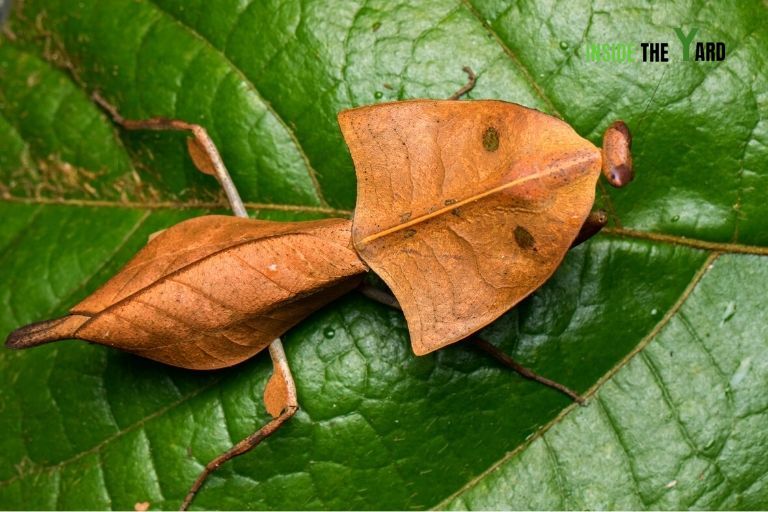
Many different species of mantis mimic dried and dead leaves. It works well as camouflage in their natural environment.
But in my opinion, the dead leaf mantis, “Deroplatys desiccata” (Scientific Name), is an expert in camouflage when it comes to leaves. “Desiccata,” the Latin word for dried, refers to dried leaves.
The females specialize in possessing a leaf-like appearance. They are much bigger than the males and have longer, leaf-like flaps on their bodies, which explains why.
As they need to be more aerodynamic when flying, the males of this species also resemble leaves, but much less so than the females.
Defense Mechanism
The mantis will lie still on the ground with its legs spread out or folded throughout an exhibition when it feels threatened. Its highly deceiving dry leaf-like body helps in such performance.
Even when you touch them, they do not move. Sometimes they quickly stand up and begin to flee. When threatened, adult “Deroplatys desiccata” can also spread its wings, known as “Deimatic Display.”
A dramatic display like this one represents a threat to predators. The mantis displays its hind wings, which have black and white stripes, and its front wings, which have a large black spot.
Habitat
The dead leaf mantis resides in damp and shallow regions. That is why it is mostly found in Indonesia, Malaysia, India, and other Asian countries.
Food
These carnivorous insects feed upon smaller insects such as crickets, locusts, and grasshoppers. Some praying mantis also eats spiders and smaller arthropods.
You May Like This Video Too!
Frequently Asked Questions (FAQs)
What is the big bug that looks like a leaf?
The giant leaf insect, commonly known as bug leaf, is an insect (Pulchriphyllium giganteum) that looks like a fresh green leaf. Its body is shaped, patterned, and colored identical to a green leaf.
What bug looks like a dried leaf?
The dead leaf mantis, butterfly/moth, and grasshopper are the bugs that look like dried leaves. They have a crippled brown-colored body with veins that look like a dead/dried leaf.
What are the bugs called that look like leaves?
Small green bugs that look like leaves are all from the Phylum Arthropoda. However, most of these bugs belong to the family Phylliidae and Order Phasmatodea.
How rare is a leaf bug?
A bug that looks like leaves are rare and not found in every place on the earth. Each of the leaf bugs has its habitat. Most of these bugs are found in the tropical regions of Asian and African countries.
Can leaf bugs hurt you?
Leaf bugs are harmless to humans. They do not sting or bite, unlike other insects. Besides, the vegetation is also secured from them as they mostly feed on green leaves and flower nectar.
Conclusion
The leaf bugs are a classic example of natural defense against inauspicious situations. They are very important for the ecological balance of the environment and cause negligible harm to nature or humans.
Since these are rare and unique in characteristics, many peoples love breeding bugs look like leaves. Now that you know about these insects, you can also get one as a pet and breed.
We expect this article has been informative and explanatory to you about the leaf-like bugs or insects.
